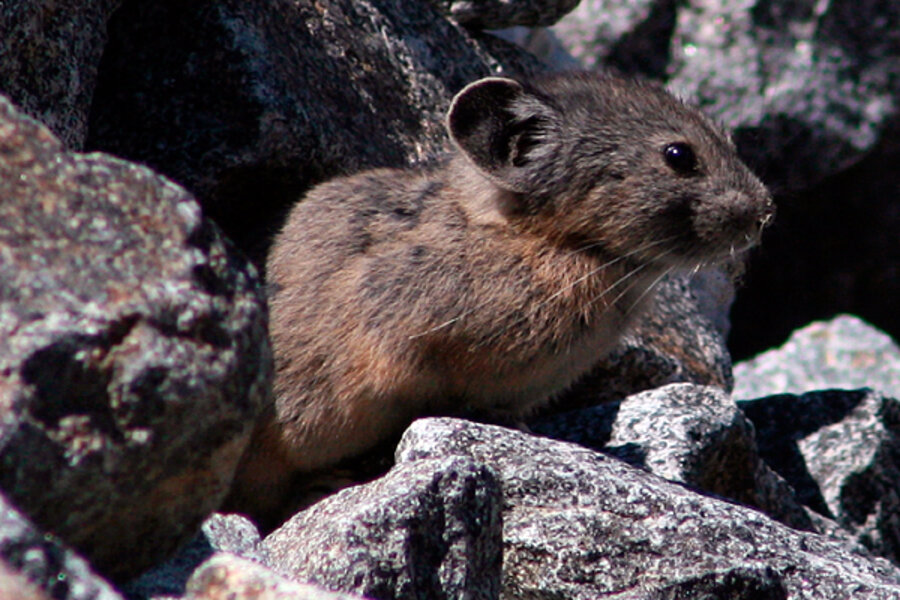Climate change: Species climbing higher and migrating north, study says
Loading...
Go north (or up), young sagebrush.
That, in effect, is the survival imperative that global warming is handing organisms worldwide, and they are responding at a pace much faster than scientists estimated about a decade ago, according to a new study published in Friday's issue of the journal Science.
Researchers in Britain analyzed dozens of studies tracking changes in the ranges of some 1,376 species of plants, animals, and insects. They found that a warming climate is driving species toward higher latitudes at an average of nearly twice the pace that studies indicated in 2003. And species are migrating to higher altitudes nearly three times faster.
They either are following food sources or are so tightly tailored to a particular temperature or precipitation regime that they are following it as conditions in their traditional ranges become more hostile to them.
Moreover, the species in the regions experiencing the most significant warming over the past 40 years are the species moving the most quickly.
"We were able to calculate how far species might have been expected to move so that the temperatures they experience today are the same as the ones they used to experience, before global warming kicked in. Remarkably, species have on average moved towards the poles as rapidly as expected," says Ralf Ohlemüller, a researcher at Durham University in Britain and a member of the team reporting the results.
The paper tells "an amazing story" of a warming climate's effect on a broad range of organisms, says Jake Weltzin, executive director of the USA National Phenology Network, an organization based in Tucson, Ariz., that coordinates efforts nationwide to monitor shifts in life-cycle patterns in plants and animals under a warming climate.
The trend is the same as previous studies, says Dr. Weltzin, who was not involved in the new research. But it also shows a stronger trend because it draws on more data than its predecessors, he says.
Beyond its observations about plants and animals, the study hints at looming challenges for people and their economies, say some conservation specialists.
"The shifts in the range of species and the fact that the shifts are moving faster have huge implications," explains Frank Lowenstein, who heads the Nature Conservancy's efforts to demonstrate how natural systems can help humans adapt to global warming.
For instance, a large body of research has shown that bark beetles are thriving under warmer conditions in the Rockies and are devastating large swaths of lodgepole pine forests there. But the bugs also have been migrating north toward Canada.
The concern: They will move into Canada's jack pine forests, which span the continent. Those forests would provide a superhighway that the beetles – currently stymied by the Great Plains – could follow to infest economically important pine forests in the eastern and southeastern United States.
The new study involved combing formal scientific papers documenting changes in the ranges of plants and animals on time scales ranging from several decades to more than a century. Over the past 40 years, the species covered by the study have moved to higher latitudes at an average rate of about 11 miles a decade. Those who moved up instead of out migrated to higher altitudes at an average of 36 feet per decade.
These are hardly expressway speeds. Team leader Chris Thomas, with the University of York, calculates that the average pace at which plants and animals are shifting poleward is about eight inches an hour.
But, he adds, that's "every hour of the day, for every day of the year. This has been going on for the last 40 years and is set to continue for at least the rest of this century."
Within the averages, species move at different paces. Some move in unexpected directions, steered by a natural or human-built obstruction that prevents them from heading in a direction most favorable to their survival.
One key factor driving the shifts: the impact that the local or regional effects of global warming can have on food supplies, reproductive cycles, and other patterns of biological activity that species have evolved to exploit, Weltzin says.
He cites research under way in Colorado in which scientists have documented an earlier bloom to early-blooming flowers, which tend to be very temperature-sensitive, and a later bloom to late-blooming flowers.
That, he says, leaves a flowerless gap in the middle of the year for creatures, such as bees, that until now have adapted to flowers of some sort throughout the late spring, summer, and early fall.
"There is some concern about what the bees will do," he explains. It's unclear whether these vital pollinators will experience declining populations in midsummer, shift their activities earlier or later in the year, or beat wings for areas with more-favorable conditions altogether.
In the context of a warming climate and its effect on flora and fauna, conservation managers face some tough choices – in effect having to perform triage as they try to ensure that species key to an ecosystem's function survive.
Writing in the August 2011 issue of the Ecological Society of America's journal Ecosphere, a team led by the Nature Conservancy's Kirk Klausmeyer devised an approach that the state of California could use for gauging an ecosystem's vulnerability to climate change and which ecosystems are most in need of conservation efforts.
The team estimates that about 18 percent of the areas the state is trying to manage to preserve biodiversity aren't vulnerable enough to need help. Another 70 percent will require some form of intervention. For another 12 percent, however, "biodiversity managers may have to reassess current conservation goals" because the areas are too vulnerable to climate and other stresses.





